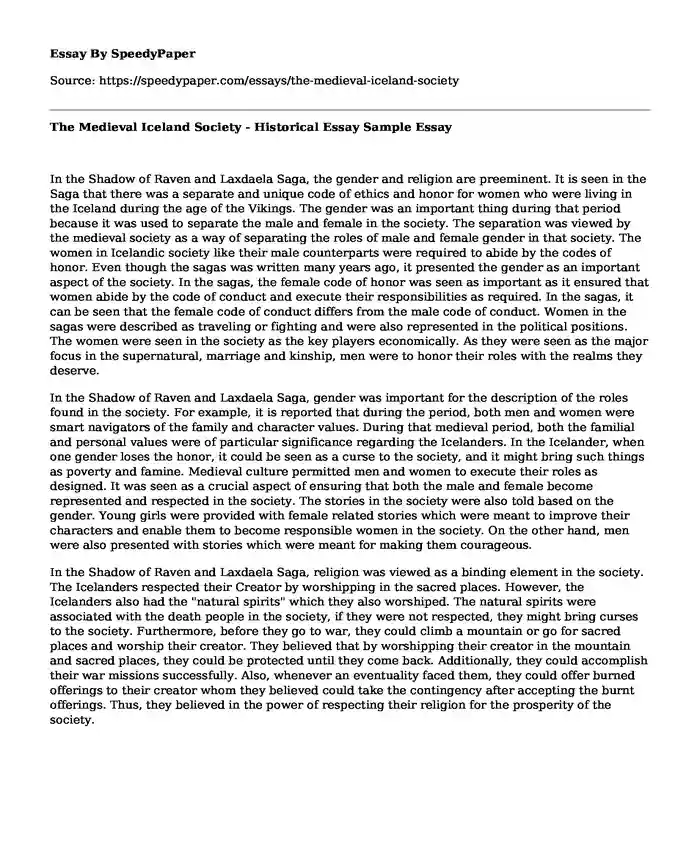In the Shadow of Raven and Laxdaela Saga, the gender and religion are preeminent. It is seen in the Saga that there was a separate and unique code of ethics and honor for women who were living in the Iceland during the age of the Vikings. The gender was an important thing during that period because it was used to separate the male and female in the society. The separation was viewed by the medieval society as a way of separating the roles of male and female gender in that society. The women in Icelandic society like their male counterparts were required to abide by the codes of honor. Even though the sagas was written many years ago, it presented the gender as an important aspect of the society. In the sagas, the female code of honor was seen as important as it ensured that women abide by the code of conduct and execute their responsibilities as required. In the sagas, it can be seen that the female code of conduct differs from the male code of conduct. Women in the sagas were described as traveling or fighting and were also represented in the political positions. The women were seen in the society as the key players economically. As they were seen as the major focus in the supernatural, marriage and kinship, men were to honor their roles with the realms they deserve.
In the Shadow of Raven and Laxdaela Saga, gender was important for the description of the roles found in the society. For example, it is reported that during the period, both men and women were smart navigators of the family and character values. During that medieval period, both the familial and personal values were of particular significance regarding the Icelanders. In the Icelander, when one gender loses the honor, it could be seen as a curse to the society, and it might bring such things as poverty and famine. Medieval culture permitted men and women to execute their roles as designed. It was seen as a crucial aspect of ensuring that both the male and female become represented and respected in the society. The stories in the society were also told based on the gender. Young girls were provided with female related stories which were meant to improve their characters and enable them to become responsible women in the society. On the other hand, men were also presented with stories which were meant for making them courageous.
In the Shadow of Raven and Laxdaela Saga, religion was viewed as a binding element in the society. The Icelanders respected their Creator by worshipping in the sacred places. However, the Icelanders also had the "natural spirits" which they also worshiped. The natural spirits were associated with the death people in the society, if they were not respected, they might bring curses to the society. Furthermore, before they go to war, they could climb a mountain or go for sacred places and worship their creator. They believed that by worshipping their creator in the mountain and sacred places, they could be protected until they come back. Additionally, they could accomplish their war missions successfully. Also, whenever an eventuality faced them, they could offer burned offerings to their creator whom they believed could take the contingency after accepting the burnt offerings. Thus, they believed in the power of respecting their religion for the prosperity of the society.
Cite this page
The Medieval Iceland Society - Historical Essay Sample. (2019, Dec 11). Retrieved from https://speedypaper.net/essays/the-medieval-iceland-society
Request Removal
If you are the original author of this essay and no longer wish to have it published on the SpeedyPaper website, please click below to request its removal:
- Essay Example: Options Analysis for Toronto Ultimate Club
- Free Essay on Creativity as a Necessity
- Free Essay: How Technological, Philosophical and Operational Innovation Can Realign the Practice of Procurement
- Free Essay Sample: Customer Relationship Management at Amazon
- Religion Essay Sample about Buddhism in South East of Asia before 1200
- HP Inc. & Apple Inc.: Rivals Setting the Pace in the Computer Hardware Industry
- Essay Sample on Open Government Implementation
Popular categories





